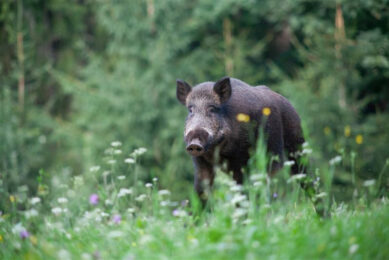USA, 10 years behind Europe – or are they?
I recently attended the American Association of Swine Veterinarians Congress in Dallas, Texas and met an older, distinguished colleague, Roy Schulz, who said ‘what happens in Europe usually hits us in the US 10 years later.’ As I had attended the congress to get a technological update, I was curious to find out what he meant?
With the new administration being formed and the new policies being formulated, the swine industry will come under fresh attacks on welfare, the environment and the use of antimicrobials, especially as growth promoters. The pig industry has flourished in recent years (over 90% of growing pigs are receiving PCV2 vaccines) but now is losing money at the rate of $15/pig produced and times are tough. There is over supply, thus there will be a need for production cutbacks. At the same time they are facing fresh challenges from organised, well-funded NGOs such as PETA and the newer Humane Society of the United States (HSUS) calling for a review of production systems (banning of gestation stalls and farrowing crates), castration and methods of humane killing.
In the UK we were the first to ban sow stalls in 1999. This had an initial economic impact, as producers had to invest to change their housing systems and also caused some increase in management problems associated with bullying and fighting, but generally we have learnt to manage this. The rest of Europe will follow in 2012 but hopefully will have learned from our mistakes. It was not the only reason but an important one that made the UK pig production less competitive than the rest of the EU and helped reduce the UK sow herd by 40% and increase pig meat imports to over 50%. We have also stopped castration but, personally, I feel that this has had a negative impact on meat quality and in particular, increased boar taint. Europe is also wrestling with this at the moment.
Regarding the environment, agricultural concentration has been required to meet the increased demand for meat products and although marketing niches can be established by ‘organic and outside production’ it is naïve to think that it will be able to satisfy production requirements for pig meat, as the world population increases. The use of corn for ethanol production to replace/reduce oil production really will have an impact on corn prices worldwide. The most severely affected will be the poorer countries of the world, which currently depend more on grain for their diet, as we saw in 2008.
Regarding antimicrobial use, we banned growth promoters in 2006. Denmark banned them several years earlier than most countries. They had to learn the lessons of leading the way, with increased E. coli diarrhoea and the resulting increased use of therapeutic antimicrobials. By the time it came along to the rest of Europe, the impact can be considered minimal, as we observed what had happened and nutrition was changed, new additives were developed and husbandry improved. The most significant improvement to E. coli infections came from the increased weaning age from 3 to 4 weeks of age. The pig is more resilient to the challenge and growth is impaired for only a week, as opposed to two. Zinc oxide in the diet also played an important role to reduce the use of therapeutic antimicrobials. If the US does ban the use of antimicrobials for ‘sub-therapeutic’ purposes e.g. improving growth and feed conversion efficiency, it should not be feared too much, as long as they are allowed to retain prevention, control and treatment claims. It will also be interesting to see if they go the step further and make in-feed antibiotics prescription-only medicines, as in Europe.
On a lighter note, I was surprised that when asking for a pork (Berkshire) chop in a restaurant, they asked me how I would like it cooked – rare, medium or well done – like a steak? It is the first time in the world that this has happened to me; normally, in the UK we cook pork until it is incinerated and tough. At half the price of beef and potentially as succulent and tasty, possibly, the US is leading Europe gastronomically.











